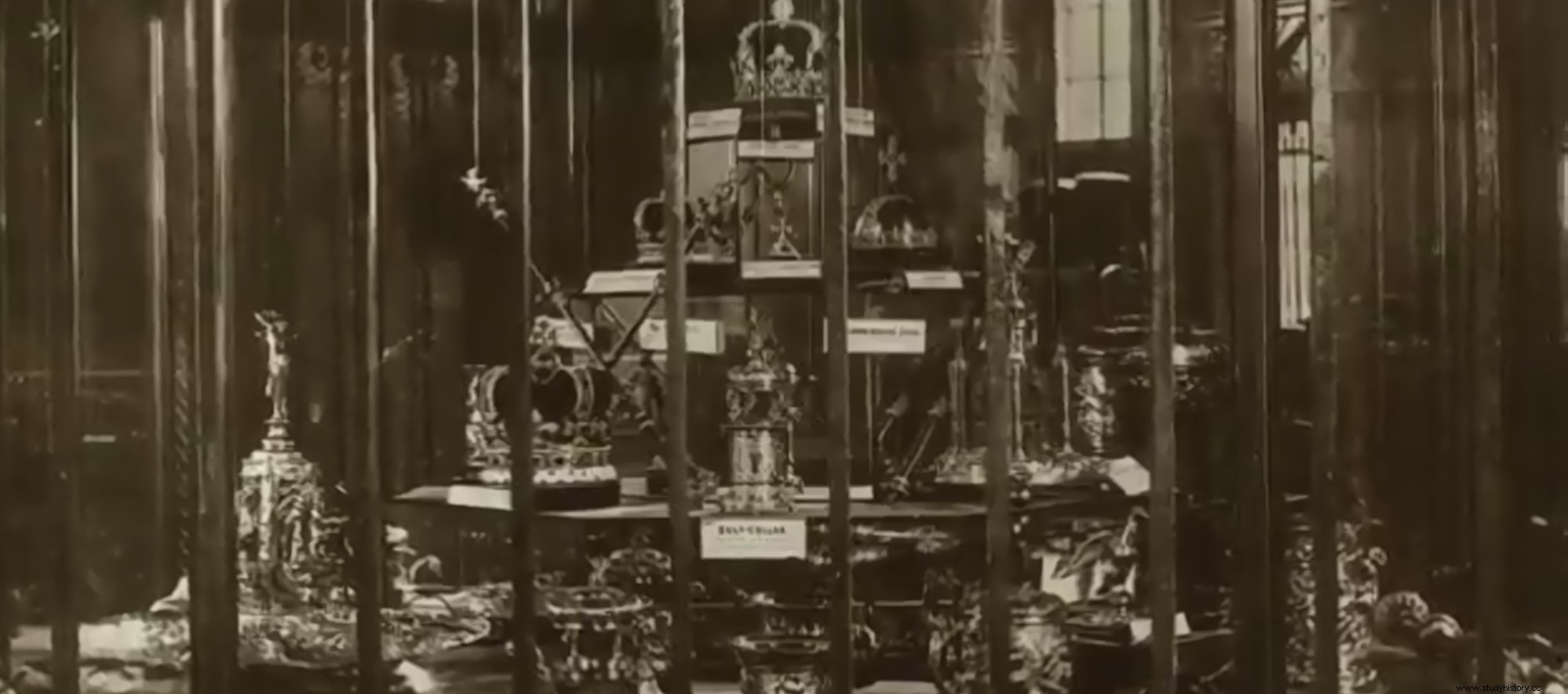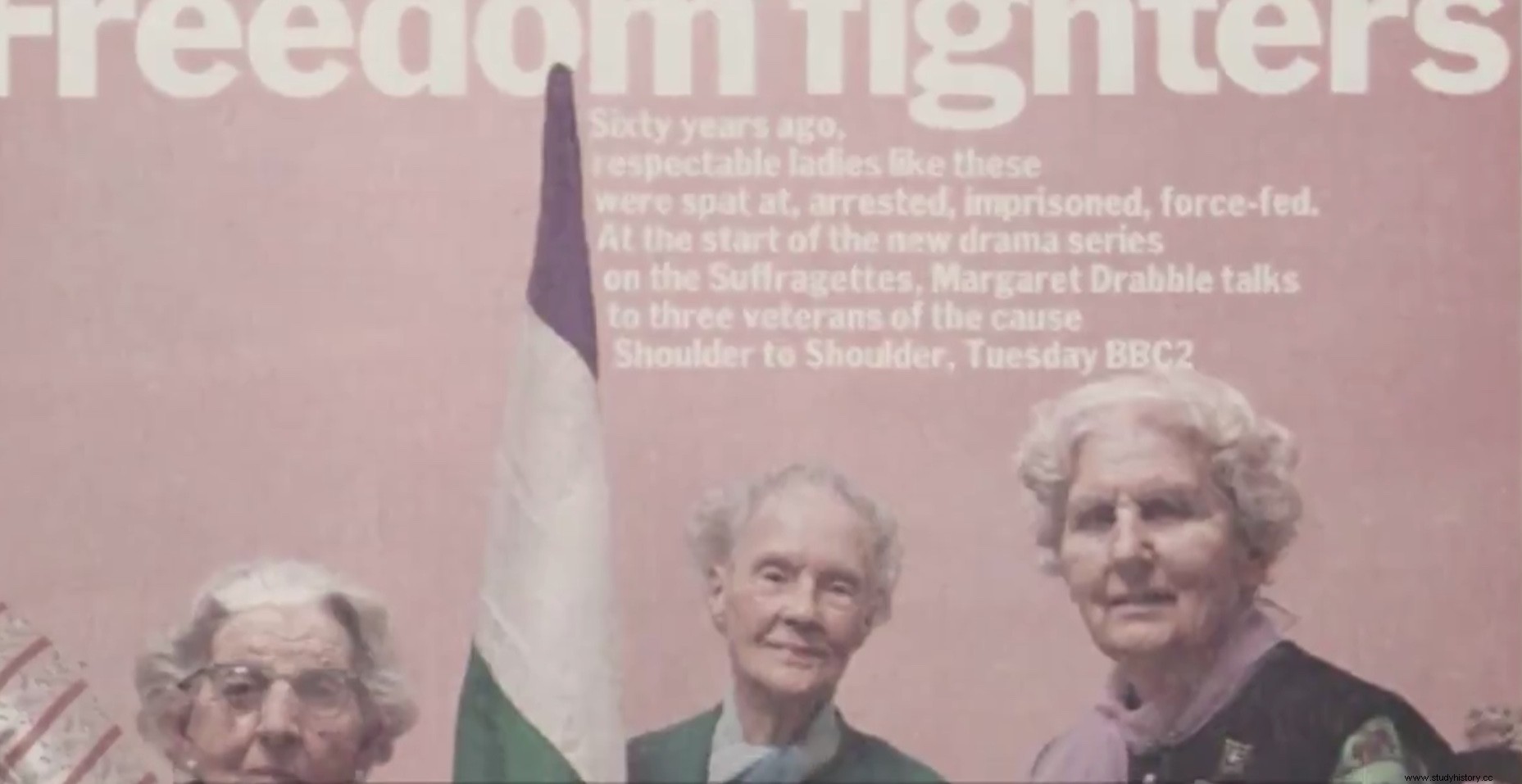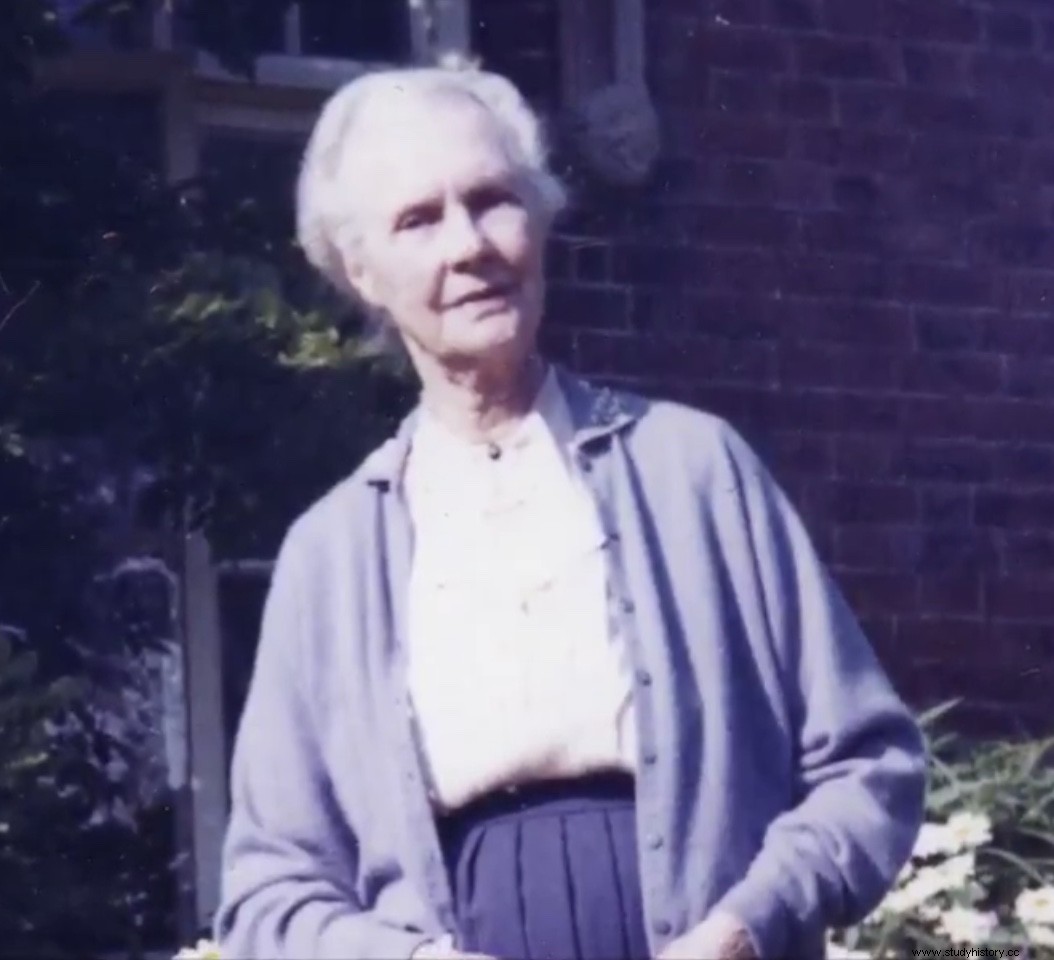The path in the fight towards equality between men and women is littered with figures who made a name for themselves in history in their efforts to achieve that goal. Today I want to talk to you about one of those women, who for more than sixty years fought hard for equality between the sexes and who stood out in two of the most significant demands of this movement during the 20th century:the right to suffrage for women and equality salary between both sexes. Her name was Leonora Cohen and she is known, quite justifiably, as The Suffragette of the Tower of London.
Leonora Cohen was born in Leeds in 1873. she At the age of fourteen she began working as a milliner and from a very young age she became interested in the feminist cause. In 1900 she married the jeweler Henry Cohen, who throughout his life always supported the ideas of his wife, which earned him more than one problem in the Leeds County Liberal Club to which he belonged. In an interview in 1974 Leonora recounted that one of the club members made the following comment to Henry:"If I had a wife like yours, he would tie her to the table leg."
Her interest in the feminist cause led Leonora to join the WSPU (Women's Social and Political Union) in 1909, created in 1903 by Emmeline Pankhurst, a movement that went down in history under the name of Suffragettes, for making the demand for women's right to vote the main reason for her protest. For Leonora, as for many other women, what attracted her to the suffrage movement was her call for direct action by women to achieve the coveted right to vote. Over time, she Leonora became part of the group of women who escorted Pankhurst at all times.
The suffragettes' performances used to be very spectacular and intended to create a sensation in public opinion. Jennie Baines became the first suffragette to be convicted by a jury, serving six weeks in jail; When she was released, she was greeted by a crowd of women on her way out of jail and a procession accompanied her on her return to London. Little by little the actions of the suffragettes became more radical. Emily Davidson became very famous when she died in 1913 run over by a horse while trying to get to King George V in the Epsom Derby.
As for our protagonist, she was imprisoned three times. The first of hers, in 1911, for throwing a stone at a window of the town hall building, cost her a week in jail. This caused her environment to turn against her and her family. Leonora's son was bullied at school and she received threatening letters from old friends.
This did not deter Leonora from fighting for her ideas. It is noteworthy that he continued to maintain his performances despite the panic he felt in the face of any confrontation, as he stated in an interview in 1974:«every time I had to carry out some activity as a militant I almost died of fear, because I hated everything that involved confrontations or disturbances, if I saw a crowd moving down a street I would go in the opposite direction ».
 In 1913, after being part of the suffrage delegation that met with Lloyd George to explain the dreadful working conditions of women, Leonora starred in the fact that gave her notoriety and gave her the nickname by which she is known. The suffragettes had embarked on a new campaign of throwing stones at the windows of public buildings. Leonora went a step further and entered the room in the Tower of London where the Crown jewels were kept and she threw an iron bar against the screen that protected them.
In 1913, after being part of the suffrage delegation that met with Lloyd George to explain the dreadful working conditions of women, Leonora starred in the fact that gave her notoriety and gave her the nickname by which she is known. The suffragettes had embarked on a new campaign of throwing stones at the windows of public buildings. Leonora went a step further and entered the room in the Tower of London where the Crown jewels were kept and she threw an iron bar against the screen that protected them.
She was arrested and brought to trial, but was acquitted after alleging that the precept by which she had been prosecuted only contemplated penalties for those who caused damage to public property worth more than five pounds, a figure that the consequences of her action had not reached.
The media impact of the action carried out was tremendous due to the symbolic importance of the object of Leonora's attack. This was the fact that earned her the nickname of The Suffragette of the Tower of London . At the next WSPU meeting, Emmeline Pankhurst introduced Leonora to the attendees as the woman who had staged an act of protest that had resonated throughout the kingdom.
Leonora continued to carry out activities for the suffrage movement which earned her a new arrest in November 1913, when she threw an object through a window of the building where the Prime Minister was visiting Leeds. She was sent to Armley Prison, where she went on a hunger and thirst strike. A curious law (called The Cat and Mouse Act ) established the possibility of releasing a prisoner who was found to be very weak, with the provision of returning to prison to serve the rest of his sentence when he was recovered. Leonora was released when she had been in jail for a month as established in said rule due to her weakness due to the hunger strike she was on, but she never returned to prison.
She settled in Harrogate with her husband and her son. There she ran a boarding house, in which she sheltered suffragettes released for the same reason as her, whom she sheltered until they regained their strength. She also helped hide activists fleeing from the police.
At the outbreak of the First World War she returned to Leeds to work in a munitions factory and founded a union for women workers in these factories. At the end of the conflict, she applied for a position in the Police, but was rejected due to her suffragist background.
 In 1920 she was appointed as a magistrate at Leeds Criminal Court, a position she would hold for thirty years. In 1928 she was awarded the OBE (Order of the British Empire) for her services at Leeds.
In 1920 she was appointed as a magistrate at Leeds Criminal Court, a position she would hold for thirty years. In 1928 she was awarded the OBE (Order of the British Empire) for her services at Leeds.
She never stopped fighting for women's rights and giving visibility to the struggle of the suffrage movement. In 1966 she participated in an exhibition at the Abbey House Museum on the suffragette movement and later in a series of interviews on the BBC on the history of suffragism with two other survivors of the time.
Already in her 90s, in 1970, she became involved in a campaign to achieve wage equality between men and women. And in 1973, on her hundredth birthday, she gave a speech in which she uttered the following sentence:«I hope that the women of the future will organize themselves in groups or unions and use their vote in an intelligent way to ensure that the highest levels are achieved. women's development r".
Leonora Cohen, The Suffragette of the Tower of London, she passed away in Wales in 1978, at the age of 105.
 .
.
